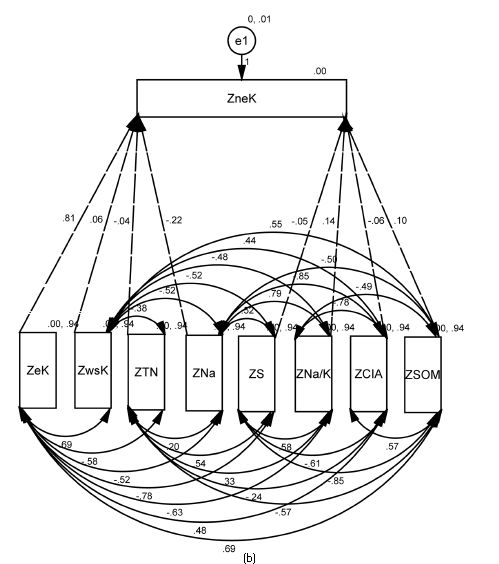Evaluating Potassium Status Change based on Path Model
2014-01-24
The status and transformation of potassium in the soil is important for crop growth. In order to determine critical environment parameters of soil K availability and to quantify those contributors by using a proposed model, under the supervision of Prof. CHEN Fang, Dr. HE Wenming from Wuhan Botanical Garden conducted soil K ions exchange experiments for soil samples and further calculated their selectivity coefficients, and explored potassium status on basis of path model to determine dynamic changes of potassium status and specific environmental parameters.
Research showed that key direct factors were soil S, ratio of sodium-potassium (Na/K), the chemical index of alteration (CIA), Soil Organic Matter in soil solution (SOM), Na, S, and total nitrogen in soil solution (TN), and key indirect factors were Carbonate (CO3), Mg, pH, Eh. Besides, path model can effectively determine direction and quantities of potassium status changes between Exchangeable potassium (eK), Non-exchangeable potassium (neK) and water-soluble potassium (wsK) under influences of specific environmental parameters.
In reversible equilibrium state of ![]() , K balance state was inclined to be moved into β and χ directions in treatments of potassium shortage. However in reversible equilibrium of
, K balance state was inclined to be moved into β and χ directions in treatments of potassium shortage. However in reversible equilibrium of ![]() , K balance state was inclined to be moved into θ and λ directions in treatments of water shortage.
, K balance state was inclined to be moved into θ and λ directions in treatments of water shortage.
Results showed that the proposed path model was able to quantitatively disclose moving direction of K status and quantify its equilibrium threshold. It provided a theoretical and practical basis for scientific and effective fertilization in agricultural plants growth.
The study was supported by the National Natural Science Foundation of China, the National Key Technology R&D Program and the Cooperated Program with the International Plant Nutrition Institute. Results have been published in PLOS One entitled “Evaluating Status Change of Soil Potassium from Path Model”.



Path model of water-soluble potassium (a), non-exchangeable potassium (b) and exchangeable potassium (c) (Image by WBG)